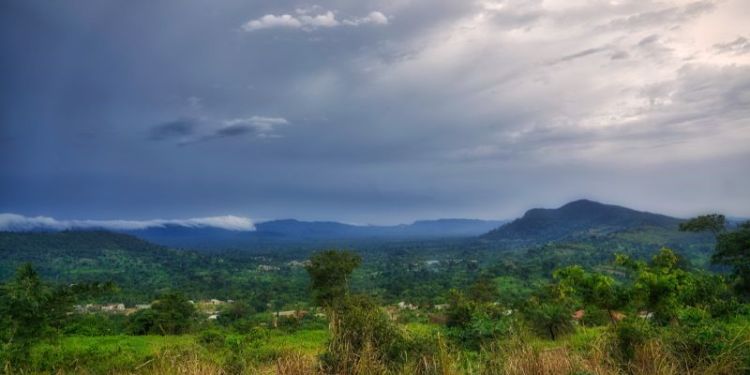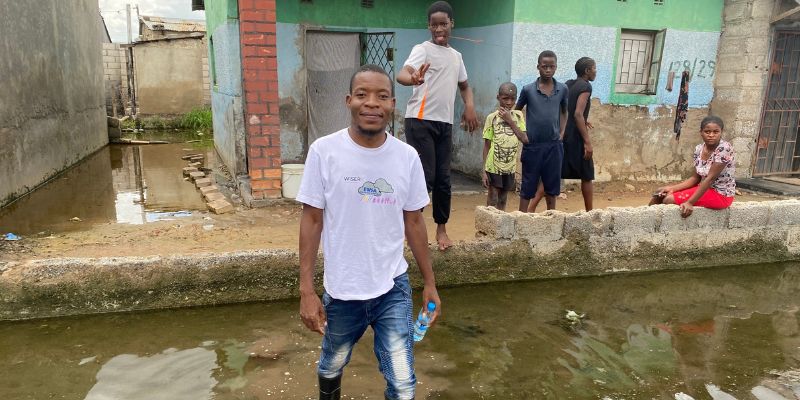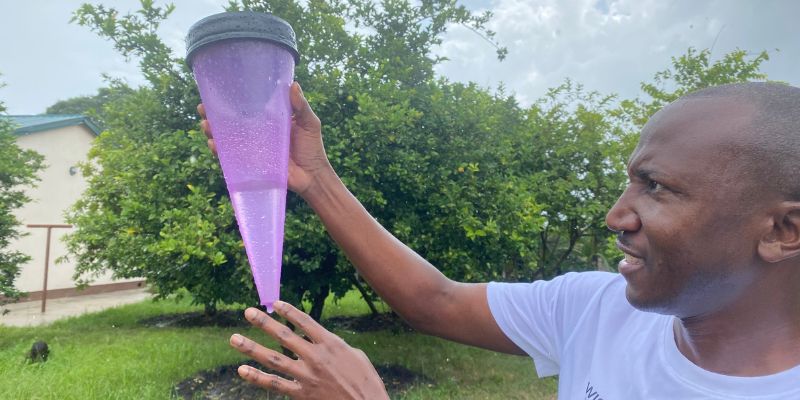Investment needed in African climate science

Africa needs long term investment in scientific infrastructure and science careers to allow the continent to adapt to climate change and its effect on weather systems.
New research led by the University of Leeds in partnership with the National Centre for Atmospheric Science, says the international community is spending billions on climate services for the region, but they should listen to the needs of African scientists if those services are to be effective and sustainable.
In a paper published in Nature the researchers say African weather and seasonal forecasting is being held back by gaps in understanding of the science behind weather systems in the tropics.
Around half the population of Africa do not have access to any early warnings of hazardous weather, and massive improvements in global weather and climate science and services have not been reflected on the continent.
It’s essential that African scientists have the skills and the tools to provide their communities with locally designed climate solutions.
Organisations such as the Intergovernmental Panel on Climate Change, the World Bank and the United Nations, are keen to rectify this and have spent many millions of pounds on the delivery of weather radars to African nations, but few of them have delivered useful data due to a lack of investment in their operation on the ground.
The African weather services market is currently estimated at around $60 million but none of the top 20 public and private sector providers are based in Africa itself.
Co-author Douglas Parker, Professor of Meteorology at the National Centre for Atmospheric Science and the University of Leeds, said: “External solutions are not always the best for Africa, and unless long-standing challenges to African capacity and capability are addressed, the investment will lack sustainability, as has been seen many times in the past.
“It’s essential that African scientists have the skills and the tools to provide their communities with locally designed climate solutions. For example, imagine that the flood management authorities ask their weather service for forecasts to be delivered for a particular city. It’s vital that the weather service is able to provide those new forecasts without always needing assistance from a partner thousands of miles away in Europe.
“It is not enough simply to impose solutions which work in the Global North. Increasing the availability of inaccurate forecasts will not give people better early warnings; sending more radars to Africa will have no impact on data availability unless we invest in African capacity and capability to maintain the equipment and exploit the data they produce.”
Forecasting solutions
The University is already working on forecasting solutions with partners in Africa to strengthen the capacity of agencies in the continent so that they can meet the needs of their population.
One successful outcome of that partnership is the FASTA smartphone app which provides real-time information about active storms over Africa, as well as a short forecast of their movement over the next couple of hours.
FASTA has been developed with African partners and has been released in several African countries to support the mission of providing a weather service with state-of-the-art information.
Several African centres are now generating the same information locally, and the University is working with them to exploit the data for the benefit of their communities.

The aftermath of heavy rain in Kanyama, a district of Lusaka, Zambia
But there are still many barriers to Africa’s ability to adapt to climate change which are highlighted in the new research, alongside several possible solutions.
- The African research community lacks the capacity and capability to advance the underlying science of meteorological processes in the tropics. One solution proposed is to invest in training in the core sciences which underpin data analysis and weather and climate
- forecast models.
- There is a need to improve past, present and future weather and climate observations, with data rescue needed for records which have not been digitised. The researchers highlight the success of a project called the African Monsoon Multidisciplinary Analysis Project (AMMA) which demonstrated that observations can be delivered to high international standards by African agencies if managers are able to use finances tactically and strategically to support infrastructure.
- Delivery of weather and climate services is held back by the low accuracy of models over Africa, with most global weather and climate models developed in and for the mid-latitudes. As artificial intelligence (AI) starts to transform global weather prediction, there is a need for African scientists to be active in embracing this new technology, to improve the speed and accuracy of predictions for their countries. The researchers call for international donors to ensure that African scientists have the skills and facilities to co-produce and deliver services that reach communities and stakeholders in every country and region.
- Major international programmes are putting significant resources into the challenge of improving African early warning systems, but researchers say there are still too many examples where operational systems fail when regional agencies do not cooperate. One solution is for donors and programmes to incentivise African leadership of projects by linking funding to successful outcomes.
The research concludes that creating sustainable solutions is also linked to innovation and job creation in Africa.

Measuring rainfall in Kanyama with a simple gauge.
Dr Benjamin Lamptey, Visiting Professor of Meteorology at the National Centre for Atmospheric Science and the University of Leeds, and lead author of the study, said that the weather of Africa was different to that of Europe and the USA and that new approaches to weather prediction needed to be developed in Africa, for Africa, including new ways to use the data and new approaches to the daily operation of a weather service.
“Every year, projects are funded across Africa to establish better weather prediction services, but very often when the project ends, the African teams still lack skills and infrastructure to maintain those services independently,” he added.
“Although weather prediction always requires international cooperation for sharing of data, we should not always be reliant on the Global North for basic things.
“There are many talented young scientists in Africa who have the ability to harness the new tools which are becoming available – high-resolution models, AI methods and satellite data. But this new generation of African scientists needs to be supported by the training, hardware and data which modern weather prediction will demand.”
The researchers say cooperation between academic and operational sectors in Africa will be key to resolving some of the issues, with universities having the capability to share knowledge about advances in weather prediction with hundreds of students annually.
Further information
This work was supported by UK Research and Innovation as part of the Global Challenges Research Fund, African SWIFT program, Grant NE/P021077/1, and by WISER Early Warnings for Southern Africa (WISER-EWSA), funded by the Met Office as part of the Weather and Climate Information Services (WISER) programme on behalf UK government’s Foreign, Commonwealth and Development Office (FCDO).




